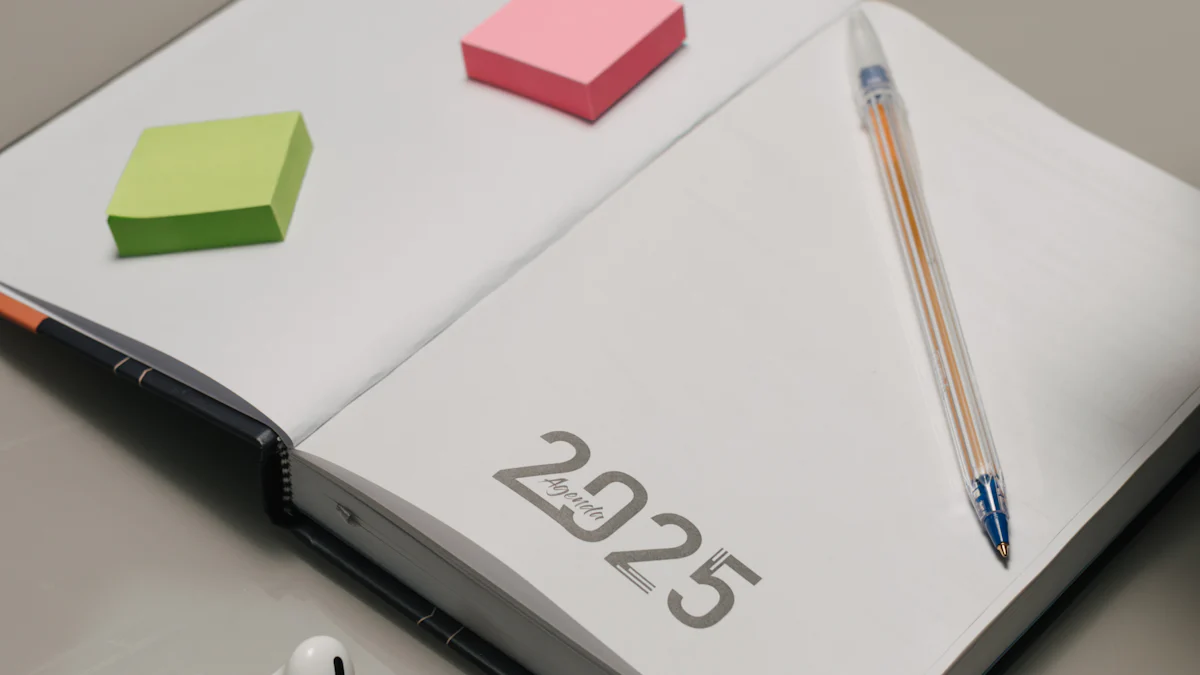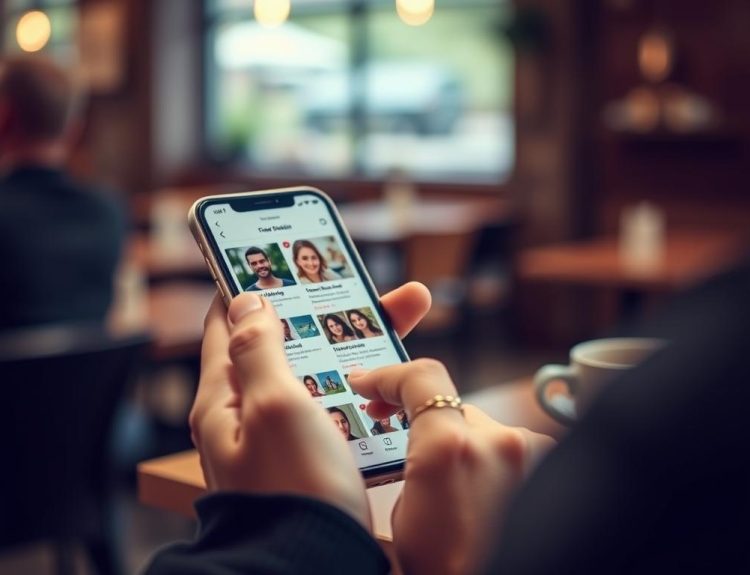Online dating has become a huge part of modern relationships, with nearly half of Americans under 30 using these platforms. While dating on line offers exciting opportunities to connect, it also comes with risks like scams, catfishing, and identity theft. In 2025, safety concerns are even more pressing as technology evolves. You need to stay proactive to protect yourself. Thankfully, dating apps are stepping up with better privacy tools and wellness features. By staying alert and following smart safety practices, you can enjoy meaningful connections without compromising your security.
Key Takeaways
- Always stay safe by using trusted dating apps with good reviews.
- Keep your info private by not oversharing and using strong passwords.
- Listen to your gut; block or report users who seem suspicious.
- Meet in public spots for first dates and tell a friend your plans.
- Chat within the app until you trust the person’s intentions.
Understanding Online Dating Risks
Common Risks in Online Dating
Scams and financial fraud
Scammers often target dating platforms to exploit users. They might create fake sob stories or claim to need urgent financial help. You should never send money to someone you’ve only met online. Even if their story sounds convincing, it’s likely a scam. Protect yourself by staying cautious and reporting suspicious behavior.
Fake profiles and catfishing
Fake profiles are everywhere. Some people use them to deceive others about their identity, a practice known as catfishing. They might use stolen photos or create elaborate lies to gain your trust. If someone refuses to verify their identity or avoids video calls, it’s a red flag. Always prioritize your safety over curiosity.
Harassment and inappropriate behavior
Unfortunately, not everyone on dating apps has good intentions. Some users may engage in harassment or send inappropriate messages. If this happens, block and report them immediately. Most platforms have tools to help you deal with such situations. Don’t hesitate to use them.
New Challenges in 2025
AI-generated fake profiles
In 2025, AI technology has made fake profiles more convincing than ever. These profiles can mimic real people with realistic photos and detailed backstories. Some even use AI-generated conversations to seem authentic. You need to stay alert and look for inconsistencies in their behavior or responses.
Advanced phishing techniques targeting dating app users
Phishing scams have become more sophisticated. Scammers might send fake links that look like official dating app pages to steal your login details. Always double-check URLs and avoid clicking on suspicious links. Using two-factor authentication can add an extra layer of security.
Tip: Be aware of other trends in 2025, like AI-generated relationships and virtual dating experiences. While these can be fun, they also come with unique risks. Always prioritize your privacy and safety when exploring new features.
Choosing the Right Platform
Researching Reputable Apps
Look for platforms with strong user reviews
When choosing a dating app, start by checking user reviews. Apps with positive feedback often prioritize safety and user satisfaction. Look for comments about how the platform handles issues like fake profiles or harassment. If users frequently mention feeling secure, that’s a good sign. Apps with a strong reputation usually invest in features that protect their community.
Check for robust safety features
A reliable dating app should offer tools that make you feel safe. Features like reporting and blocking options are essential. Some apps even use AI to detect suspicious behavior, which helps prevent scams. Others provide educational resources to teach you how to spot red flags. These features show that the platform cares about your safety.
Tip: Apps with in-app safety features, like “Snooze” or safety check-ins, can help you manage your experience and stay accountable during dates.
Importance of Verification Features
Profile verification tools
Verification tools are a game-changer. They confirm that users are real people, not bots or scammers. Verified profiles give you peace of mind, making it easier to trust the person you’re chatting with. This reduces risks like catfishing and impersonation. When you know someone has passed a verification process, you can focus on building a genuine connection.
Two-factor authentication
Two-factor authentication adds another layer of security. It ensures that only you can access your account, even if someone gets your password. This feature is especially important for dating on line, where personal information is often shared. Always enable this option if it’s available.
Privacy Settings to Look For
Control over profile visibility
Customizable privacy settings let you decide who can see your profile. You can limit visibility to specific groups or hide certain details. This control helps you avoid unwanted attention and keeps your information safe. Look for apps that let you adjust these settings easily.
Options to block or report users
Blocking and reporting tools are non-negotiable. They let you take immediate action if someone makes you uncomfortable. Apps like Tinder and Plenty of Fish make this process simple, so you can quickly address any issues. These features create a safer environment for everyone.
Note: Platforms that combine privacy controls with robust reporting tools show they’re serious about user safety.
Protecting Your Personal Information
Avoid Oversharing
Limit sharing of personal details (e.g., address, workplace)
It’s tempting to share details about your life when you’re getting to know someone, but oversharing can put you at risk. Avoid giving out sensitive information like your home address, workplace, or daily routines. This information can be misused, especially if the person you’re talking to isn’t who they claim to be. Keep conversations light and focus on general topics until you feel confident about their intentions.
Be cautious with photos that reveal sensitive information
Photos can say more about you than you realize. A picture taken at your workplace or near your home might give away your location. Even small details in the background, like street signs or landmarks, can reveal where you live or work. Before uploading a photo, double-check it for anything that could compromise your privacy. Stick to neutral backgrounds to stay safe.
Use Strong Passwords and Secure Accounts
Create unique passwords for dating apps
Using the same password across multiple accounts is risky. If one account gets hacked, all your accounts become vulnerable. Create a unique password for your dating app account. Use a mix of letters, numbers, and symbols to make it harder to guess. Password managers can help you keep track of them without the hassle.
Enable multi-factor authentication
Multi-factor authentication (MFA) adds an extra layer of security to your account. It requires you to verify your identity through a second step, like a text message or an authentication app. Even if someone gets your password, MFA makes it much harder for them to access your account. Always enable this feature if your dating app offers it.
Use a Separate Email for Dating Apps
Benefits of keeping dating activity separate
Using a separate email for dating apps helps protect your primary email from spam or phishing attempts. It also keeps your dating activity private and organized. If your dating email gets compromised, your main accounts remain secure. This small step can save you a lot of trouble down the road.
How to set up a secure email account
Setting up a secure email is simple. Choose a reputable email provider with strong security features, like Gmail or ProtonMail. Use a unique password and enable two-factor authentication for added protection. Avoid using your full name or other personal details in the email address. This keeps your identity private while you’re dating on line.
Avoid Using Live or Motion Photos
Risks of live photos revealing location or identity
Live or motion photos might seem fun to share, but they can expose more about you than you realize. These photos often contain metadata, like the exact time and location where they were taken. If someone downloads your picture, they could extract this information and learn where you live, work, or hang out. That’s a scary thought, right?
Even without metadata, live photos can reveal unintended details. For example, a quick movement in the background might show a street sign, a license plate, or even your house number. These small clues can give away your identity or location to someone with bad intentions. You don’t want to make it easy for someone to track you down.
Tip: Always treat your profile pictures as public information. Assume anyone could see them, even if your account is private.
Tips for maintaining privacy with profile pictures
You can still have great profile pictures while keeping your privacy intact. Here’s how:
- Stick to static images. Regular photos don’t carry the same risks as live or motion ones. They’re a safer choice for dating apps.
- Use neutral backgrounds. A plain wall, a park, or a coffee shop works well. Avoid places that are easy to identify, like your home or workplace.
- Check for hidden details. Before uploading, zoom in on your photo. Look for anything in the background that could reveal personal information.
- Avoid group photos. Including friends or family might seem harmless, but it could expose their identities too. Keep the focus on you.
Note: If you’re unsure about a photo, ask a trusted friend to review it. A second pair of eyes can catch things you might miss.
By being mindful of your photos, you can enjoy online dating without compromising your safety.
Recognizing Red Flags

Behavioral Warning Signs
Inconsistent stories or evasive answers
Pay attention if someone’s stories don’t add up. Maybe they told you they work in finance, but later they mention being a teacher. These inconsistencies could mean they’re hiding something. If they dodge your questions or give vague answers, that’s another red flag. Trust your gut when something feels off.
Excessive flattery or rushing intimacy
It’s nice to feel appreciated, but over-the-top compliments can be a tactic to lower your guard. If someone you just met online starts calling you their soulmate or pushes for a serious relationship too quickly, take a step back. Genuine connections take time to build. Don’t let anyone rush you into something you’re not ready for.
Financial Red Flags
Requests for money or gifts
If someone you’re chatting with asks for money, stop right there. They might claim they need help with an emergency or ask for a small loan. No matter how convincing their story sounds, don’t send them anything. Scammers often prey on emotions to get what they want. Protect yourself by saying no and reporting them.
Claims of financial emergencies
Be cautious if someone suddenly shares a sob story about losing their wallet or needing help to pay for a medical bill. These are common tactics used by scammers to manipulate you. Remember, a genuine person wouldn’t ask for financial help from someone they just met online.
Suspicious Online Activity
Refusal to video chat or meet in person
If someone avoids video calls or keeps making excuses to not meet in person, it’s a major warning sign. They might not be who they claim to be. Video chatting is a simple way to verify someone’s identity. If they refuse, it’s best to move on.
Profiles with limited or generic information
A profile with just one photo or a vague bio should make you pause. Scammers often create these to lure people in without revealing much about themselves. In 2023, U.S. financial institutions reported 4.6 million suspicious activity cases, showing how common these tactics are. Always be cautious when a profile feels incomplete or generic.
Tip: Stay alert for other signs like overly polished photos or robotic responses. These could indicate AI-generated profiles, which are becoming more common in dating on line.
Safe Communication Practices
Stay Within the App
Benefits of using in-app messaging
Sticking to in-app messaging keeps your conversations secure. Dating apps often monitor messages for suspicious activity, which helps protect you from scams or harassment. These platforms also let you block or report users easily if something feels off. By staying within the app, you maintain control over your interactions without exposing personal contact details like your phone number or email.
Risks of moving to external platforms too soon
Moving to external platforms, like texting or social media, can put your privacy at risk. Once someone has your phone number or social media handle, it’s harder to cut ties if things go wrong. They might even use this information to track you online. Keep conversations within the app until you feel confident about the person’s intentions.
Tip: If someone pressures you to switch to another platform early on, consider it a red flag. Trustworthy people will respect your decision to stay within the app.
Use Video Calls to Verify Identity
Tips for safe video chatting
Video calls are a great way to confirm someone’s identity. Before starting a call, choose a neutral background to avoid revealing personal details. Use the app’s built-in video feature if available, as it adds an extra layer of security. Keep the call short and casual for the first time. This helps you gauge their authenticity without feeling overwhelmed.
How to spot signs of deception during video calls
Pay attention to their behavior during the call. Do they avoid showing their face clearly? Is their voice inconsistent with their profile? These could be signs they’re not who they claim to be. Watch for unnatural pauses or overly rehearsed answers, as these might indicate they’re hiding something. Trust your instincts if anything feels off.
Note: If someone refuses to video chat despite multiple requests, it’s best to move on. Genuine people won’t shy away from proving their identity.
Set Clear Boundaries
Communicate your comfort levels early
Setting boundaries upfront helps avoid misunderstandings. Here’s how you can do it:
- Slow down communication to see if their style matches yours.
- Share your preferences for how often you’d like to chat.
- Ask important questions early to establish honesty and mutual respect.
By being clear about your expectations, you create a foundation for healthy communication.
Respect and enforce your boundaries
Once you’ve set your boundaries, stick to them. If someone crosses a line, don’t hesitate to remind them of your limits. Respect works both ways, so make sure you honor their boundaries too. If they continue to push, it’s a sign they may not value your comfort. Don’t be afraid to walk away from such situations.
Reminder: Healthy relationships start with mutual respect. Don’t compromise your boundaries to please someone else.
Meeting Safely Offline

Choose Public Meeting Places
Benefits of meeting in well-lit, crowded areas
When meeting someone for the first time, always pick a public place. Well-lit, busy areas reduce the chances of anything going wrong. You’ll feel safer knowing there are people around. Public spaces also make it easier to leave if the date doesn’t go as planned. Plus, they create a neutral environment where you can focus on getting to know each other without distractions.
Examples of safe first-date locations
Not sure where to meet? Coffee shops, casual restaurants, or parks are great options. These places are relaxed and give you plenty of time to chat. If you’re looking for something more interactive, consider a museum or a daytime event. Avoid secluded spots or private settings until you feel completely comfortable with the person.
Share Your Plans with Someone You Trust
Inform a friend or family member of your plans
Before heading out, let someone close to you know your plans. Share details like where you’re going, who you’re meeting, and when you expect to be back. This simple step ensures someone knows your whereabouts in case of an emergency. It’s a small action that can make a big difference in your safety.
Use location-sharing apps for added safety
Take it a step further by using a location-sharing app. Apps like Find My or Google Maps let your trusted person track your location in real-time. This feature adds an extra layer of security, especially if your plans change during the date. It’s a modern way to stay connected and safe while dating on line.
Trust Your Instincts
Recognize and act on feelings of discomfort
Your instincts are your best guide. If something feels off during the date, trust that feeling. Maybe the person isn’t who they seemed to be online, or their behavior makes you uneasy. Don’t ignore these signs. Excuse yourself and leave if you feel uncomfortable. Your safety always comes first.
Have an exit plan ready
It’s smart to have an exit plan before the date starts. Drive yourself or arrange your own transportation so you’re not dependent on your date. If you need to leave quickly, having a ride ready can save you from an awkward or unsafe situation. A little preparation goes a long way in keeping you secure.
Tip: Always prioritize your comfort and safety. It’s better to be cautious than to regret ignoring a warning sign.
Avoid Frequented Locations for Initial Dates
Protect your privacy by choosing neutral locations
When planning a first date, avoid places you visit regularly. Meeting at your favorite coffee shop or the gym you go to every morning might seem convenient, but it can compromise your privacy. If things don’t go well, the person could easily find you there again. You don’t want to risk someone showing up uninvited or making you feel uncomfortable in your safe spaces.
Instead, pick a neutral location where you don’t have any personal ties. This keeps your daily routine private and gives you more control over the situation. Neutral spots also create a level playing field, making it easier to focus on getting to know each other without distractions.
Tip: Think of your first date as a trial run. Keep your personal life separate until you’re sure about the person’s intentions.
Examples of safe, neutral meeting spots
Not sure where to meet? Here are some great options:
- Coffee shops or casual cafes: These are perfect for a relaxed conversation. They’re public, easy to leave if needed, and don’t require a long time commitment.
- Parks or outdoor spaces: A walk in a busy park can be a great way to chat while staying in a safe, open environment.
- Museums or art galleries: These provide a shared activity that sparks conversation while keeping things casual.
- Bookstores or libraries: If you both love reading, this can be a fun and neutral spot to meet.
- Daytime events or markets: Farmer’s markets or local fairs offer a lively atmosphere and plenty of people around.
Reminder: Avoid meeting at your home, their home, or any secluded areas. Your safety should always come first. Choose a spot where you feel comfortable and secure.
Reporting and Seeking Help
Reporting Inappropriate Behavior
How to report users on dating platforms
Encountering inappropriate behavior while dating on line can feel overwhelming, but reporting it is easier than you think. Most dating apps have built-in tools to help you take action quickly. Here’s what you should do:
- Identify the behavior that violates the platform’s rules. This could include abusive messages, requests for money, or harassment.
- Use the app’s reporting feature to flag the user. Look for options like “Report” or “Flag” in their profile or chat window.
- Block the user to stop further contact. This ensures they can’t message or view your profile anymore.
- If the situation escalates, contact the app’s customer support team. They can investigate and take additional steps to protect you.
By following these steps, you not only protect yourself but also help create a safer environment for others on the platform.
Importance of documenting incidents
When you report someone, having evidence strengthens your case. Save screenshots of messages or interactions that show the inappropriate behavior. This documentation helps the platform’s support team take swift action. It also gives you a record in case you need to involve law enforcement. Remember, staying proactive can make a big difference in resolving these situations.
Accessing Support Resources
Online safety hotlines and organizations
You’re not alone if you face challenges while dating on line. Several organizations specialize in online safety and offer valuable resources:
- The Trust and Safety Team at eharmony has over 20 years of experience in protecting users. They provide tips on spotting scams and recognizing red flags.
- The Online Dating and Discovery Association works to create safer dating environments. Their updates on the Online Safety Act highlight efforts to reduce online fraud and harm.
These resources can guide you through tricky situations and help you stay informed about best practices.
Counseling and support groups for victims
If you’ve been a victim of a scam or harassment, seeking support is crucial. SCARS (Society of Citizens Against Relationship Scams) offers affordable counseling and therapy options. They help victims recover from the emotional toll of betrayal and rebuild their confidence.
You can also join SCARS’ free, confidential support groups. These groups connect you with others who’ve faced similar experiences, providing a safe space to share and heal. Professional guidance can empower you to move forward and regain control of your life.
Tip: Don’t hesitate to reach out for help. Support networks and counseling can make a world of difference in your recovery journey.
Online dating can be exciting, but staying vigilant is key to keeping it safe. Always choose reputable platforms that prioritize user safety. Protect your personal information and secure your accounts with strong passwords and two-factor authentication. Trust your instincts when something feels off, and watch for red flags like inconsistent stories or requests for money. Keep initial meetings in public places and let someone you trust know your plans. Dating on line in 2025 comes with risks, but by following these tips, you can enjoy meaningful connections while staying safe.
FAQ
What should I do if someone asks for my personal information too soon?
Stay cautious. If someone asks for your address, workplace, or other sensitive details early on, it’s a red flag. Politely decline and steer the conversation elsewhere. Protecting your privacy is key.
Tip: Trustworthy people will respect your boundaries and won’t pressure you for personal details.
How can I tell if a profile is fake?
Look for signs like overly polished photos, vague bios, or inconsistent responses. Fake profiles often avoid video calls or meeting in person. Trust your instincts if something feels off.
Note: Verified profiles on dating apps are usually more reliable. Stick to chatting with those.
Is it safe to share my social media accounts with someone I just met?
No, it’s not safe. Sharing social media accounts can expose personal details like your location, friends, or daily activities. Keep your social media private until you trust the person.
Reminder: Staying within the app protects your privacy and keeps you in control.
What’s the best way to end a conversation with someone who makes me uncomfortable?
Be direct but polite. Say something like, “I don’t think we’re a good match. I wish you the best.” Then block and report them if necessary.
Tip: You don’t owe anyone an explanation. Your comfort and safety come first.
Should I trust someone who refuses to video chat?
No, you shouldn’t. Refusing to video chat is a major red flag. They might not be who they claim to be. Move on if they keep making excuses.
Reminder: Video calls are a simple way to verify someone’s identity. Don’t skip this step.










[…] Essential Online Dating Safety Tips for 2025 […]